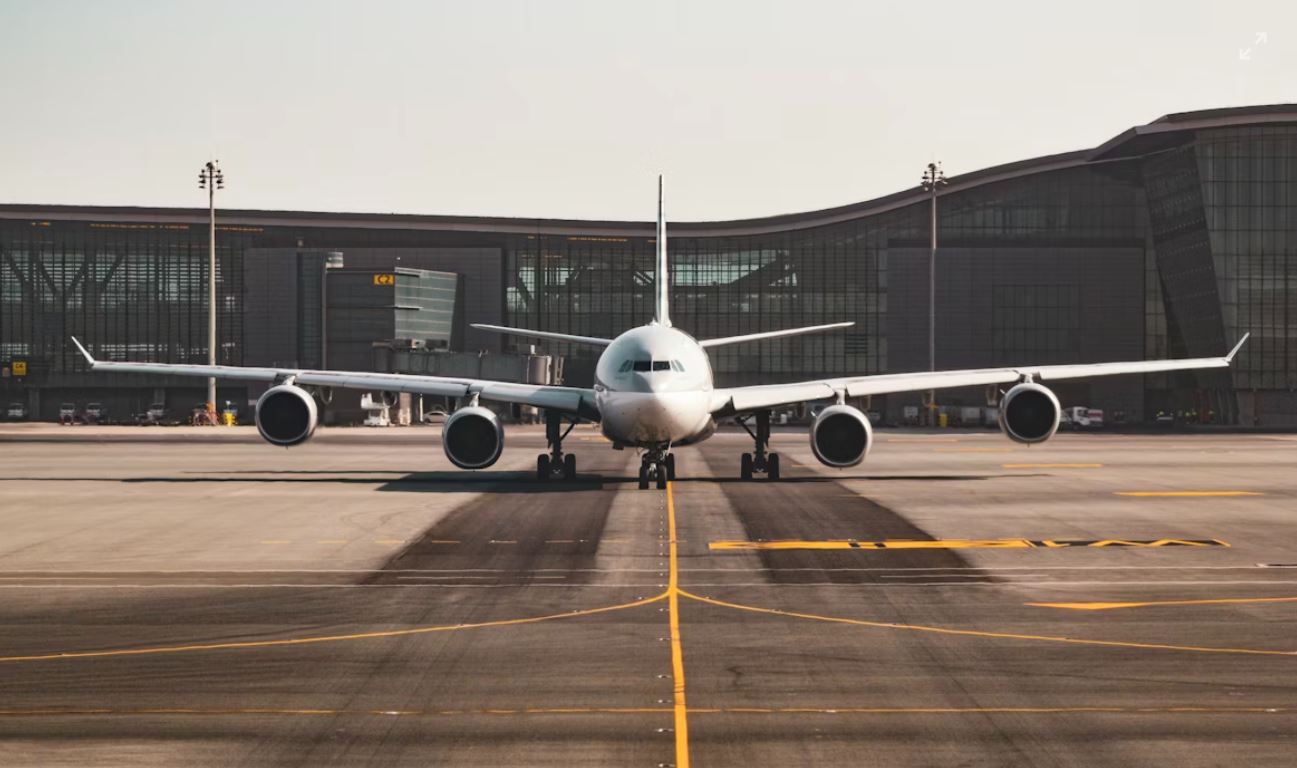Picture: Unsplash
Aviation safety begins long before you taxi down the runway. A comprehensive aircraft maintenance plan isn’t just a regulatory requirement, it’s your primary defense against mechanical failures, unexpected downtime, and potentially catastrophic incidents. Whether you’re a private pilot managing a single-engine aircraft or overseeing a fleet of business jets, having a structured maintenance approach ensures every flight starts with confidence. The Federal Aviation Administration mandates specific maintenance requirements, but smart pilots and operators go beyond minimum compliance to establish proactive systems that catch problems before they become emergencies.
Comprehensive Inspection Schedule and Documentation System
The backbone of any effective maintenance plan is a meticulously organized inspection schedule paired with thorough documentation practices. Aircraft maintenance operates on multiple timeframes, daily preflight checks, periodic inspections at specified flight hours, annual reviews, and component, specific service intervals. Creating a master calendar that tracks all these requirements prevents overlooked items and ensures compliance with manufacturer recommendations and FAA regulations. Digital maintenance tracking software has revolutionized this process, allowing operators to set automatic reminders, store historical records, and generate reports that demonstrate airworthiness during ramp checks or insurance audits.
Your documentation should include detailed logbook entries for every maintenance action, squawk lists that track recurring issues, and work orders that provide accountability for repairs. Many experienced operators maintain redundant records, both digital and paper, to protect against data loss. This systematic approach doesn’t just satisfy regulatory requirements; it creates a valuable maintenance history that can identify patterns, inform purchasing decisions, and even increase resale value when the time comes to upgrade your aircraft. Think of it as building a medical history for your aircraft, the more complete and accurate your records, the better equipped you’ll be to make informed decisions about its care.
Critical Safety Equipment Verification and Replacement Protocol
Safety equipment represents your last line of defense during emergencies, making regular verification and timely replacement absolutely essential. Every aircraft maintenance plan must include specific protocols for inspecting, testing, and replacing critical safety items before they reach expiration dates or show signs of degradation. Fire suppression systems require particularly careful attention, as they must function flawlessly in high-stress situations where seconds matter. Professionals who need to test fire suppression systems in aircraft environments often rely on a Halotron 1 aircraft fire extinguisher due to its clean-agent properties that won’t damage sensitive avionics.
Beyond fire safety equipment, your protocol should encompass emergency locator transmitters, first aid kits, survival gear for overwater or wilderness operations, and personal protective equipment. Many safety items have service life limits that aren’t immediately obvious, chemical agents degrade over time, batteries lose capacity, and mechanical components suffer from environmental exposure even when unused. Establishing a quarterly safety equipment audit catches these issues before they compromise your readiness. Smart operators also maintain backup equipment for mission, critical items, ensuring that grounded aircraft due to expired safety gear becomes a rare occurrence rather than a frustrating reality.
Preventive Maintenance Program for High-Wear Components
While inspections identify existing problems, preventive maintenance anticipates them before they develop. A robust preventive maintenance program focuses on high-wear components that experience stress during normal operations, items like brake assemblies, landing gear bearings, engine mounts, control cables, and hydraulic systems. Rather than waiting for these components to show symptoms of failure, preventive maintenance follows manufacturer-recommended service intervals that replace or refurbish parts based on flight hours, calendar time, or cycles. This approach significantly reduces the risk of in-flight failures and unscheduled maintenance that disrupts flying plans and increases costs.
Your preventive program should prioritize components whose failure could compromise flight safety, followed by those that cause expensive secondary damage when they fail. For example, regular oil analysis can detect internal engine wear patterns long before they cause visible problems, allowing for scheduled repairs during convenient downtime rather than emergency overhauls. Tracking component life limits using spreadsheets or specialized software ensures nothing slips through the cracks, while bulk purchasing of commonly replaced items can reduce costs significantly over time. The goal is simple: catch small problems early before they become big, expensive headaches at the worst possible moment.
Qualified Mechanic Relationships and Maintenance Provider Network
The technical complexity of modern aircraft demands expertise that goes beyond owner, performed maintenance. Building relationships with qualified aviation maintenance technicians and establishing a reliable network of service providers forms a crucial pillar of your maintenance plan. Your primary mechanic should be an FAA-certified Airframe and Powerplant technician with specific experience on your aircraft type, but smart operators also cultivate backup relationships to ensure coverage during vacations, emergencies, or when specialized skills are required.
Beyond general mechanics, your network should include avionics specialists, propeller shops, engine overhaul facilities, and inspection authorization holders for annual inspections. Geographic considerations matter too, having contacts at airports within your typical flying range provides options when maintenance issues arise away from home base. Regular communication with your maintenance team keeps them informed about your flying patterns, any squawks you’ve noticed, and upcoming trips that might require special attention. Many experienced operators schedule periodic consultations with their mechanics to review the aircraft’s overall condition and discuss long, term maintenance planning, creating a collaborative relationship that enhances both safety and efficiency.
Parts Inventory and Supply Chain Management Strategy
Nothing grounds an aircraft faster than waiting for critical parts, making supply chain management an often-overlooked component of effective maintenance planning. Your strategy should balance the cost of maintaining inventory against the expense and inconvenience of aircraft downtime. Start by identifying components that commonly require replacement, filters, spark plugs, brake pads, gaskets, and fluids specific to your aircraft model. Keeping these items in stock enables quick turnaround on routine maintenance and prevents delays when issues arise during inspections.
For more expensive or rarely needed parts, establish relationships with suppliers who offer expedited shipping and maintain good inventory levels of parts for your aircraft type. Some operators join type clubs or owner groups that facilitate parts sharing or group purchases, significantly reducing costs while maintaining access to hard-to-find components. Your parts management system should track what you have on hand, monitor expiration dates for time-sensitive items, and flag when stock levels need replenishment. Consider the supply chain vulnerabilities specific to your aircraft, older models may have discontinued parts requiring alternative sources, while newer aircraft might depend on international suppliers with longer lead times.
Conclusion
A comprehensive aircraft maintenance plan transforms flying from a risky proposition into a calculated, manageable activity with acceptable safety margins. The five must-haves outlined, systematic inspection scheduling, safety equipment protocols, preventive maintenance programs, mechanic relationships, and parts management, work together synergistically to create a safety culture that protects both aircraft and occupants. While establishing these systems requires initial investment of time and resources, the long-term benefits in safety, reliability, reduced costs, and peace of mind prove invaluable. Remember that your maintenance plan should be a living document that evolves with your aircraft’s condition, your flying mission, and regulatory changes.
Picture: Unsplash
Aviation safety begins long before you taxi down the runway. A comprehensive aircraft maintenance plan isn’t just a regulatory requirement, it’s your primary defense against mechanical failures, unexpected downtime, and potentially catastrophic incidents. Whether you’re a private pilot managing a single-engine aircraft or overseeing a fleet of business jets, having a structured maintenance approach ensures every flight starts with confidence. The Federal Aviation Administration mandates specific maintenance requirements, but smart pilots and operators go beyond minimum compliance to establish proactive systems that catch problems before they become emergencies.
Comprehensive Inspection Schedule and Documentation System
The backbone of any effective maintenance plan is a meticulously organized inspection schedule paired with thorough documentation practices. Aircraft maintenance operates on multiple timeframes, daily preflight checks, periodic inspections at specified flight hours, annual reviews, and component, specific service intervals. Creating a master calendar that tracks all these requirements prevents overlooked items and ensures compliance with manufacturer recommendations and FAA regulations. Digital maintenance tracking software has revolutionized this process, allowing operators to set automatic reminders, store historical records, and generate reports that demonstrate airworthiness during ramp checks or insurance audits.
Your documentation should include detailed logbook entries for every maintenance action, squawk lists that track recurring issues, and work orders that provide accountability for repairs. Many experienced operators maintain redundant records, both digital and paper, to protect against data loss. This systematic approach doesn’t just satisfy regulatory requirements; it creates a valuable maintenance history that can identify patterns, inform purchasing decisions, and even increase resale value when the time comes to upgrade your aircraft. Think of it as building a medical history for your aircraft, the more complete and accurate your records, the better equipped you’ll be to make informed decisions about its care.
Critical Safety Equipment Verification and Replacement Protocol
Safety equipment represents your last line of defense during emergencies, making regular verification and timely replacement absolutely essential. Every aircraft maintenance plan must include specific protocols for inspecting, testing, and replacing critical safety items before they reach expiration dates or show signs of degradation. Fire suppression systems require particularly careful attention, as they must function flawlessly in high-stress situations where seconds matter. Professionals who need to test fire suppression systems in aircraft environments often rely on a Halotron 1 aircraft fire extinguisher due to its clean-agent properties that won’t damage sensitive avionics.
Beyond fire safety equipment, your protocol should encompass emergency locator transmitters, first aid kits, survival gear for overwater or wilderness operations, and personal protective equipment. Many safety items have service life limits that aren’t immediately obvious, chemical agents degrade over time, batteries lose capacity, and mechanical components suffer from environmental exposure even when unused. Establishing a quarterly safety equipment audit catches these issues before they compromise your readiness. Smart operators also maintain backup equipment for mission, critical items, ensuring that grounded aircraft due to expired safety gear becomes a rare occurrence rather than a frustrating reality.
Preventive Maintenance Program for High-Wear Components
While inspections identify existing problems, preventive maintenance anticipates them before they develop. A robust preventive maintenance program focuses on high-wear components that experience stress during normal operations, items like brake assemblies, landing gear bearings, engine mounts, control cables, and hydraulic systems. Rather than waiting for these components to show symptoms of failure, preventive maintenance follows manufacturer-recommended service intervals that replace or refurbish parts based on flight hours, calendar time, or cycles. This approach significantly reduces the risk of in-flight failures and unscheduled maintenance that disrupts flying plans and increases costs.
Your preventive program should prioritize components whose failure could compromise flight safety, followed by those that cause expensive secondary damage when they fail. For example, regular oil analysis can detect internal engine wear patterns long before they cause visible problems, allowing for scheduled repairs during convenient downtime rather than emergency overhauls. Tracking component life limits using spreadsheets or specialized software ensures nothing slips through the cracks, while bulk purchasing of commonly replaced items can reduce costs significantly over time. The goal is simple: catch small problems early before they become big, expensive headaches at the worst possible moment.
Qualified Mechanic Relationships and Maintenance Provider Network
The technical complexity of modern aircraft demands expertise that goes beyond owner, performed maintenance. Building relationships with qualified aviation maintenance technicians and establishing a reliable network of service providers forms a crucial pillar of your maintenance plan. Your primary mechanic should be an FAA-certified Airframe and Powerplant technician with specific experience on your aircraft type, but smart operators also cultivate backup relationships to ensure coverage during vacations, emergencies, or when specialized skills are required.
Beyond general mechanics, your network should include avionics specialists, propeller shops, engine overhaul facilities, and inspection authorization holders for annual inspections. Geographic considerations matter too, having contacts at airports within your typical flying range provides options when maintenance issues arise away from home base. Regular communication with your maintenance team keeps them informed about your flying patterns, any squawks you’ve noticed, and upcoming trips that might require special attention. Many experienced operators schedule periodic consultations with their mechanics to review the aircraft’s overall condition and discuss long, term maintenance planning, creating a collaborative relationship that enhances both safety and efficiency.
Parts Inventory and Supply Chain Management Strategy
Nothing grounds an aircraft faster than waiting for critical parts, making supply chain management an often-overlooked component of effective maintenance planning. Your strategy should balance the cost of maintaining inventory against the expense and inconvenience of aircraft downtime. Start by identifying components that commonly require replacement, filters, spark plugs, brake pads, gaskets, and fluids specific to your aircraft model. Keeping these items in stock enables quick turnaround on routine maintenance and prevents delays when issues arise during inspections.
For more expensive or rarely needed parts, establish relationships with suppliers who offer expedited shipping and maintain good inventory levels of parts for your aircraft type. Some operators join type clubs or owner groups that facilitate parts sharing or group purchases, significantly reducing costs while maintaining access to hard-to-find components. Your parts management system should track what you have on hand, monitor expiration dates for time-sensitive items, and flag when stock levels need replenishment. Consider the supply chain vulnerabilities specific to your aircraft, older models may have discontinued parts requiring alternative sources, while newer aircraft might depend on international suppliers with longer lead times.
Conclusion
A comprehensive aircraft maintenance plan transforms flying from a risky proposition into a calculated, manageable activity with acceptable safety margins. The five must-haves outlined, systematic inspection scheduling, safety equipment protocols, preventive maintenance programs, mechanic relationships, and parts management, work together synergistically to create a safety culture that protects both aircraft and occupants. While establishing these systems requires initial investment of time and resources, the long-term benefits in safety, reliability, reduced costs, and peace of mind prove invaluable. Remember that your maintenance plan should be a living document that evolves with your aircraft’s condition, your flying mission, and regulatory changes.



































